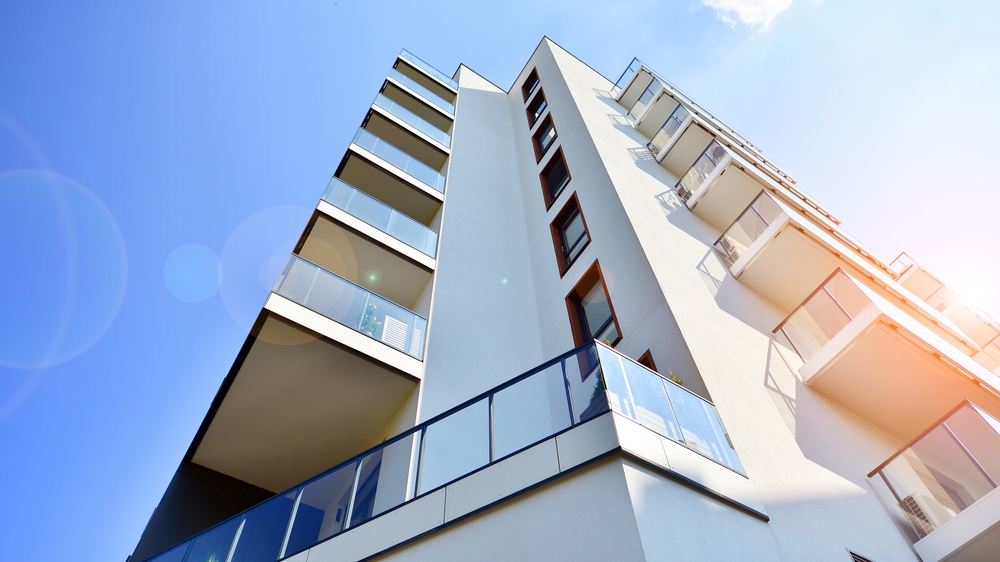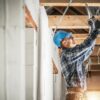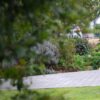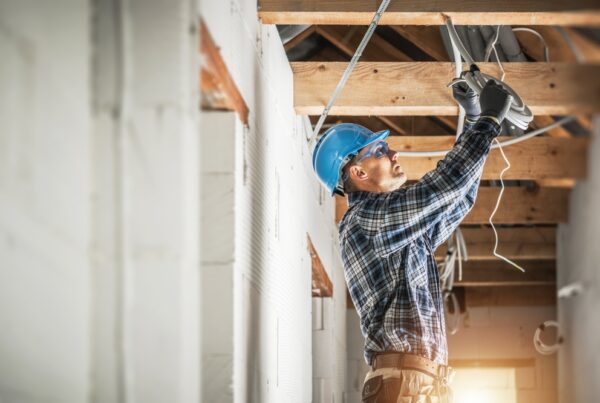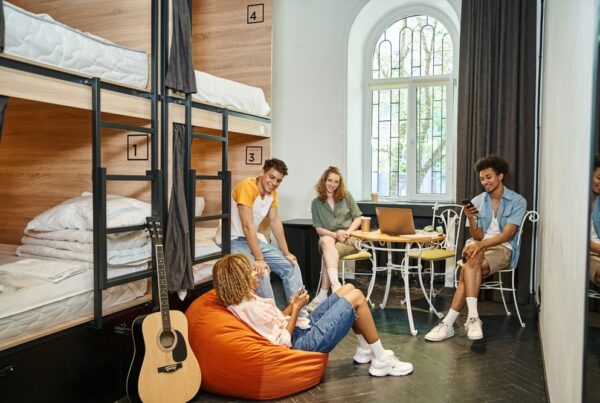This year is seeing a growing body of evidence that apartments are emerging from the shadows of standalone houses as a worthy competitor for investment dollars, according to the newly created Hotspotting National Top 10 Apartment Hotspot report.

The new report identifies the top apartment locations for the next six months of this year with suburbs in Queensland, New South Wales, Victoria, South Australia, and the ACT all making the cut.
Hotspotting Director Terry Ryder said apartments overall were outperforming standalone houses this year in a number of ways, including faster growth in rents, superior price growth rates for much of the past 12 months and a growing share of new dwelling approvals.
“There is a plethora of reasons why apartments are increasingly becoming the property of first choice for homebuyers and investors,” Mr Ryder said.
“It’s not just about affordability – although that plays a big role in our largest cities – but our population is simply embracing apartment living more because of the opportunity to reside in more desirable locations as well as having easy access to lifestyle precincts.
“Developers have also been constructing more owner occupier stock, such as three- and four-bedroom apartments, as well as offering superior resident facilities such as rooftop and BBQ areas, infinity pools and spas, private dining rooms, and even the complimentary use of vehicles for those who don’t have transport.”
Hotspotting General Manager Tim Graham said while the shift to higher density living has been under way for decades, Australia still had a long way to go compared to other global cities such as London and Singapore.
“In London, apartments comprise 94 per cent of dwellings, while in Singapore it’s 93 per cent and in Hong Kong it’s 84 per cent,” Mr Graham said.
“In comparison, about 46 per cent of residences in Sydney are apartments, while in some smaller cities such as Hobart that percentage drops to just 15 per cent.
“More than 50 per cent of new dwellings currently under construction are higher density, however, this figure still falls short of the supply needed for our booming population, which is likely to push apartment prices higher over the medium-term.”
Mr Ryder said investors had long been attracted to apartments because of their historically higher yields and solid demand from tenants.
“Now, we are seeing rental growth in apartments outpace houses, as well as superior price growth over the past year, too,” Mr Ryder said.
“We have significant numbers of downsizers active in them market, as well as hundreds of thousands of overseas migrants arriving on our shores, with many of them coming from cities where apartment living is the norm.
“All of these factors point towards a solid future for apartments that are designed and built to be long-term homes of first choice for tenants and owner-occupiers alike.”
Hotspotting National 2023 Top 10 Apartment Hotspots
Annerley Brisbane, QLD
Median unit price: $500,000
Number of sales (1yr): 113
10-year Growth Average: 4.2%
Median rental yield: 5.1%
Vacancy rate: 0.9%
Days on market: 13 days
Mr Graham said research on previous host cities for the Olympics shows that there is considerable impact on residential real estate value – notably in the years leading up to the event – and that the suburbs with the highest growth in values are those close to the main venues.
“The Brisbane suburb of Annerley is well-placed to feel the positive impacts of the 2032 Olympics, as a near neighbour of the main event venue – Woolloongabba – and other key venues in and around the Brisbane CBD,” he said.
“Beyond of the Olympics’ influence, Annerley is a well-located and well-connected suburb in Brisbane’s inner-south.
“Key infrastructure includes a major hospital and the St Lucia campus of the University of Queensland via the Eleanor Schonell Bridge.”
Mr Graham said residents of this precinct have multiple train stations on the rail link from central Brisbane to the southern suburbs and beyond to the Gold Coast
“The Pacific Motorway, linking south to the Gold Coast, is the eastern border of the suburb,” he said.
“Annerley houses may be beyond the reach of many buyers with a median house price above $1 million but typical units are half the price.
“Units are popular for their affordability, with 113 sales in the past 12 months, compared to 92 house sales.”
Units sell faster than houses – on average in 13 days, compared to 23 days for houses, he said.
“The suburb also has a residential vacancy rate below one per cent and investors can expect rental yields above five per cent,” Mr Graham said.
Belconnen Canberra, ACT
Median Unit Price: $490,000
Number of sales (1yr): 295
10yr Growth Average: 4.7% per year
Median Rental Yield: 5.7%
Vacancy Rate: 1.4%
Days on Market: 39 days
Mr Ryder said Canberra is Australia’s second most expensive city after Sydney, with a median house price in July 2023 around $950,000.
“Apartments increasingly are providing an affordable alternative, particularly those located in precincts with good amenities,” Mr Ryder said.
“The suburb of Belconnen, on the shore of Lake Ginninderra in the District of Belconnen, is one precinct where most residents live in units – in the past 12 months there were 295 unit sales and 23 house sales.”
Mr Ryder said the median price for a Belconnen unit rose seven per cent in the 12 months to May 2023, but still offers affordability at $490,000 as well as a low vacancy rate of just 1.4 per cent.
“The location of the sprawling University of Canberra campus alongside Belconnen generates steady demand,” he said.
“Also nearby are the Canberra International Sports and Aquatic Centre, Calvary Hospital, Canberra Institute of Technology, the Australian Institute of Sport and the Australian Federal Police regional headquarters.”
Clayton Melbourne, VIC
Median Unit Price: $730,000
Number of sales (1yr): 175
10yr Growth Average: 4.3% per year
Median Rental Yield: 4.1%
Vacancy Rate: 1.8%
Days on Market: 47 days
Mr Graham said the City of Monash features the largest concentration of jobs in Greater Melbourne, thanks in large part to its massive hospital and medical precinct and many high-tech industries.
“This is a key reason why unemployment is low in the LGA,” he said.
“Enhancing the LGA further is a construction boom with dozens of projects under construction or in the pipeline across the city.
“The Clayton Health and Education precinct is continuing to expand, with Australia’s first dedicated heart hospital open in February 2023.”
Mr Graham said the Suburban Rail Loop (SRL) East will be a further boost for the city.
“Running from Cheltenham to Box Hill, the 90-kilometre project will include a new transport ‘super hub’ at Clayton,” he said.
“Construction began in mid-2022 with the project expected to generate 8,000 jobs.”
Mr Graham said continuing strong population growth is also generating urban renewal.
“These factors are identified in the State planning instrument and augur well for future housing demand in the City of Monash – as well as the property market,” he said.
“The suburb of Clayton is well-located beside Monash University and Monash Medical Centre.
“The suburb’s median house price is $1.2 million but typical apartments are in the
$700,000s – with yields above four percent, supported by a low vacancy rate of 1.8 per cent in June this year.”
Dicky Beach, Sunshine Coast, QLD
Median Unit Price: $620,000
Number of sales (1yr): 22
10yr Growth Average: 12.8% per year
Median Rental Yield: 4.6%
Vacancy Rate: 1.9%
Days on Market: 12 days
Mr Ryder said the Sunshine Coast has been one of Australia’s strongest markets since 2020, boosted by the region’s big infrastructure spend and its key role in the Exodus to Affordable Lifestyle trend.
“Research has shown the Sunshine Coast to be one of the nation’s top choices for Australians relocating from the big cities to the regions,” Mr Ryder said.
“Exceptional price growth from 2020 to 2022 means the Sunshine Coast has become a much pricier market to get into – and market attention has switched to the more affordable Caloundra precinct at the southern end of the coastal strip.”
Mr Ryder said this precinct includes a number of beachside suburbs including Dicky Beach, Moffat Beach, Kings Beach, and Shelly Beach.
“Dicky Beach is a small enclave with tightly held real estate,” he said.
“There are only a handful of sales each year and listings typically sell within a fortnight.
“Vacancies are low, and rents have risen steadily in the past three years – while the long-term annual capital growth rate is around 13 per cent.”
Mr Ryder said the median house price for Dicky Beach is $1.6 million but typical units sell in the $600,000s.
“There are similar numbers is neighbouring suburbs,” he said.
“This precinct has good infrastructure and amenities, including major shopping centres and extensive green spaces.
“It is just 6 kilometres to the $2 billion Sunshine Coast University Hospital and 25 kilometres to the airport, which has recently been upgraded to international status.”
Gymea Sydney, NSW
Median Unit Price: $885,000
Number of sales (1yr): 114
10yr Growth Average: 2.1% per year
Median Rental Yield: 4.1%
Vacancy Rate: 0.5%
Days on Market: 29 days
Mr Graham said Sutherland Shire has attracted growing interest from buyers in recent years because of its water-focused lifestyle, proximity to national parks, and relative affordability.
“Lifestyle is a big part of the attraction, with proximity to numerous bays and beaches in Port Hacking and the Georges River, as well as the Royal National Park,” he said.
“Sutherland Shire is a family-oriented area with a relaxed community feel. The region is experiencing significant population growth, with 50,000 people expected to move to the area by 2035.”
Mr Graham said several suburbs have been rezoned to include more apartments, for which there is growing demand.
“Gymea is a ‘nerve centre’ suburb, with major medical and education amenities, Westfield Shoppingtown and rail links to central Sydney.
“The price gap between houses and apartments is boosting demand for attached dwellings – in the suburb of Gymea, the median price for units is roughly half that of houses.”
Vacancies are particularly low in this area – 0.5 per cent, according to SQM Research – and rents for apartments have been growing strongly in recent years, including 17 per cent in the past 12 months, Mr Ryder said.
Kensington Melbourne, VIC
Median Unit Price: $550,000
Number of sales (1yr): 94
10yr Growth Average: 2% per year
Median Rental Yield: 4.6%
Vacancy Rate:0.7%
Days on Market: 35 days
Mr Graham said Kensington is an inner-city suburb of Melbourne known for its village feel, cafes, and diversity of architecture, including Victorian terraces, cottages, warehouse apartments and new structures in the west of the suburb.
“The suburb is hilly in sections and contains established tree-lined streets,” he said.
“Kensington was once home to one of Victoria’s major abattoirs and livestock saleyards, an army ordnance depot, and a number of factories.
“The stock yards ceased operation in 1984, prompting significant urban renewal in
the area now known as Kensington Banks – and increasingly the suburb has been gentrified.”
Mr Graham said Kensington’s housing is primarily medium density, a mix of semi- detached row or terrace houses, apartments, and public housing.
“The median house price is $1.18 million but the median for units is half that level – and the suburb’s affordability and lifestyle is attracting growing numbers of home buyers and investors,” he said.
“Sales in Kensington in the past 12 months have been evenly split between houses and units.
“The vacancy rate here is 0.7 per cent, well below the average for Melbourne and, according to SQM Research, rents for both houses and units have increased almost 20 per cent in the past year.”
Mitchell Park Adelaide, SA
Median Unit Price: $405,000
Number of sales (1yr): 34
10yr Growth Average: 3.5% per year
Median Rental Yield: 5.2%
Vacancy Rate: 0.4%
Days on Market: 28 days
Mr Ryder said the suburbs of the City of Marion have become a sought-after precinct in Adelaide because of their middle-market affordability, their proximity to multiple major institutions and their strong transport links.
“Major facilities in this precinct include the Bedford Park and Tonsley campuses of Flinders University, the Flinders Medical precinct, a TAFESA campus and the Tonsley Innovation precinct,” he said.
“Their proximity generates major demand from buyers and tenants with the vacancy rate currently just 0.4 per cent, with rents growing at an annual rate of 14 per cent over the past three years.”
Mr Ryder said this precinct is connected to other parts of Adelaide by the Southern Expressway and Main South Road, as well as commuter rail links, with multiple stations accessible by Mitchell Park residents.
“Also nearby is one of Adelaide’s largest retail complexes, Westfield Marion, as well as numerous primary and secondary schools,” he said.
“Recent price growth has lifted median house prices in Mitchell Park and neighbouring suburbs into the $600,000 to $700,000 range, but units provide an affordable alternative with above average rental returns.”
The median unit price for Mitchell Park has increased 22 per cent in the past year but remains affordable around $400,000, he said.
Southport, Gold Coast, QLD
Median Unit Price: $505,000
Number of sales (1yr): 764
10yr Growth average: 6.7% per year
Median Rental Yield: 6.1%
Vacancy Rate: 0.6%
Days on Market: 22 days
Mr Graham said the 2018 Commonwealth Games left Southport with a major legacy – extensive infrastructure.
Now, major new enterprises are adding to the precinct’s reputation as a centre for economic activity, employment, and enterprise, he said.
“The Games was the catalyst for the light rail network and the $1.8 billion Gold Coast University Hospital,” Mr Graham said.
“The latter forms part of the Gold Coast Health and Knowledge Precinct, predicted to have 26,000 jobs when completed.”
Mr Graham said considered the Gold Coast’s CBD, Southport was also declared a Priority Development Area by the Gold Coast City Council in 2013.
“Southport has undergone serious gentrification since then, introducing vibrancy to what was an older-style suburb, bringing diversification of industry and catering for population growth,” he said.
“This, together with the lifestyle advantages of this precinct – including access to The Broadwater – augurs well for the property market as job opportunities expand.
“Vacancy rates here are low and usually more stable than the Gold Coast tourist spots that attract the transient population, and prices are more affordable.”
There is also a higher-than-average number of renters seeking homes, providing openings for investors, Mr Graham said.
“The median price for houses here is $850,000 but units are around $500,000, providing a high level of affordability and yields above six per cent, supported by vacancies well below one per cent,” he said.
Stanmore Sydney, NSW
Median Unit Price: $765,000
Number of sales (1yr): 48
10yr Growth Average: 1% per year
Median Rental Yield: 4.0%
Vacancy Rate: 1.5%
Days on Market: 32 days
Mr Ryder said one of the emerging trends in the Greater Sydney property market is growing numbers of people buying apartments in well-connected locations where apartments typically cost less than half the price of houses.
“The trend is driven by downsizers, young buyers and others seeking lifestyle and affordability in good locations,” he said.
“There is particularly prevalent in the Inner West on the fringe of the Sydney CBD, where Stanmore is a leading example – the median house of $2 million compares with the median unit price of $765,000, according to CoreLogic.”
Mr Ryder said Stanmore is one of Sydney’s best-connected suburbs, boosted by major transport links and proximity to key education and medical facilities.
“It is known for its long strip of shops along Parramatta Road,” he said.
“It benefits from its proximity to the University of Sydney campus in neighbouring Camperdown, which also has the Royal Prince Alfred Hospital.
“Stanmore is a well-connected suburb, with road links including the Great Western Highway and WestConnex, plus train services to the CBD.”
Mr Ryder said these features generate high rental demand, with rents rising 13 per cent in the past 12 months, according to SQM Research.
Yorkeys Knob Cairns, QLD
Median Unit Price: $305,000
Number of sales (1yr): 86
10yr Growth Average: 8.5% per year
Median Rental Yield: 6.6%
Vacancy Rate: 0.8%
Days on Market: 14 days
Mr Graham said the Cairns property market is underscored by affordability and low vacancies – and as its economy strengthens, it is preparing for further growth as it builds on a diverse range of sectors.
“While the city’s economy once centred primarily around tourism and sugar, it is gaining breadth and depth in industries such as healthcare, agriculture, education, defence, construction, mining, and information technology,” he said.
“The construction and resources sectors in particular are driving economic forces,” he said.
“Of particular note is the unemployment rate – 3.6 per cent at the start of 2023 – below state and national averages.”
Mr Graham said five priority projects will facilitate growth in major economic sectors when completed, while the State Government has declared an 856-hectare site at Wrights Creek a State Development Area.
“All of this activity, along with a tropical lifestyle and quality infrastructure, is boosting Cairns’ economic future,” he said.
“Real estate demand is rising, with strong price growth increasingly evident. Low vacancy rates and high rental returns are attracting investors.”
Yorkeys Knob is a small beach suburb where properties are tightly held and listings sell quickly, he said.
“The median house price is $530,000 but typical units sell in the low $300,000s,” he said.
